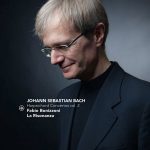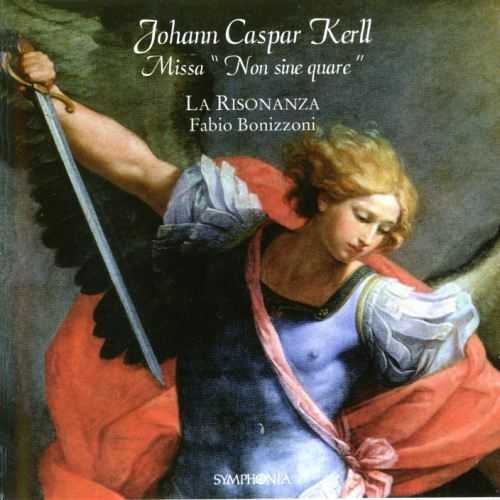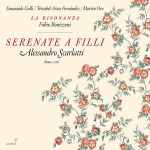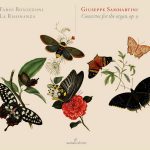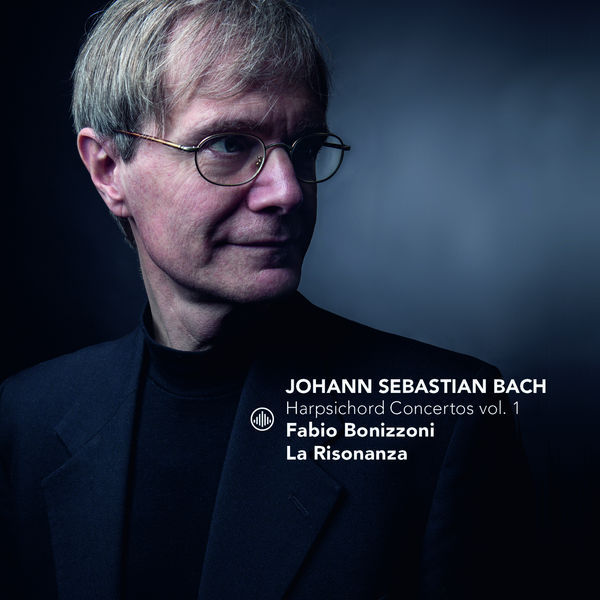
Composer: Johann Sebastian Bach
Performer: Fabio Bonizzoni. La Risonanza
Conductor: Fabio Bonizzoni
Format: FLAC (tracks)
Label: Challenge
Catalogue: CC72773
Release: 2018
Size: 374 MB
Recovery: +3%
Scan: yes
Keyboard Concerto No. 1 in D minor, BWV1052
01. I. Allegro
02. II. Adagio
03. III. Allegro
Keyboard Concerto No. 2 in E major, BWV1053
04. I. [no tempo marking]
05. II. Siciliano
06. III. Allegro
Keyboard Concerto No. 4 in A major, BWV1055
07. I. Allegro
08. II. Larghetto
09. III. Allegro ma non tanto
Keyboard Concerto No. 5 in F minor, BWV1056
10. I. [no tempo marking]
11. II. Largo
12. III. Presto
This is the first volume in a complete survey of Bach’s harpsichord concertos, recorded by La Risonanza and Fabio Bonizzoni in one-to-a-part practice performance.
The first instalment of a complete edition of Johann Sebastian Bach’s harpsichord concertos includes following works: BWV 1052, BWV 1053, BWV 1055, BWV 1056. Fabio Bonizzoni, one of the most learned and imaginative harpsichordists of our time, presents these concertos along with soloists from his orchestra, La Risonanza in one-to-a-part performances.
With his Fifth Brandenburg Concerto of 1719, Bach had created the first harpsichord concerto. From 1729, in Leipzig, the opportunity arose to continue this experiment: each week at Café Zimmermann he conducted his Collegium musicum in orchestral concerts that lasted around two hours. In the summer of 1733, he took delivery of “a new harpsichord, the like of which has not been heard before around here”. This magnificent instrument, which featured at the Zimmermann concerts, urgently called for concertos to be played by himself as soloist, and even more so by his sons and students. Not only in Saxony but also well beyond, Bach was considered to be the absolute authority in all things harpsichord and organ; he therefore made his own contribution to the emerging genre of the “clavier concerto”. The manuscript of his six harpsichord concertos BWV1052 to 1057 should therefore be understood as a repertoire collection for his Collegium musicum, and as a compositional manifesto.
Within the six concertos, each work takes on a specific function: The D minor concerto is the longest, most virtuosic and most Italianate of the collection. The stormy and sombre concerto is followed by the serene and cantabile E major concerto which, as Joshua Rifkin has convincingly argued, may well be based on a lost oboe concerto in E flat major Whilst the concertos in D minor and E major are substantial works, the concertos in A major and F minor are far more compact. Both display noticeable influences of the galant style and were therefore probably not written before 1730.
As a soloist, Bonizzoni has been recording for many years for the Spanish label Glossa. His discography includes works by Claudio Merulo, Giovanni Salvatore, Giovanni Picchi, Francesco Geminiani, Bernardo Storace, Domenico Scarlatti and Johann Sebastian Bach (Goldberg Variations and the Art of Fugue). His latest release is devoted to the two books of toccatas of Girolamo Frescobaldi.
In 2010, Bonizzoni completed, with La Risonanza, the project of recording the complete Italian Cantatas with instruments by G.F. Handel: this project has been defined by Gramophone magazine as the most important of the decade, and 3 of the 7 CDs have been awarded the prestigious Handel Stanley Sadie Prize. The last disc of this series, Apollo e Dafne, won a Gramophone Award in 2011.
One might be forgiven for thinking: “meh, a thousandth recording of Bach’s harpsichord concertos”. And you wouldn’t be wrong, necessarily, but some soloists have the intelligence to offer people a good reason to pay attention to the new version. Fabio Bonizzoni’s reason is the harpsichord he is using: a contemporary copy of an extraordinary harpsichord by Ioannes Couchet, an Antwerp instrument from the period 1640-1650. A sound that even the harpsichord’s most fervent detractors would surely find intriguing, rich, ferocious, and both wooden and metallic: a great success, including on the part of the copyist. Bonizzoni and the ensemble La Risonanza have also done a job of musicology, returning to the earlier manuscripts, knowing that the majority of Bach’s harpsichord concertos are in fact transcription (by the Cantor himself, of course) of earlier concertos for violin, oboe or other melodic instruments, which naturally entails a number of differences in the ornaments and the discourse for the soloist. We are eagerly and impatiently awaiting the second volume.
